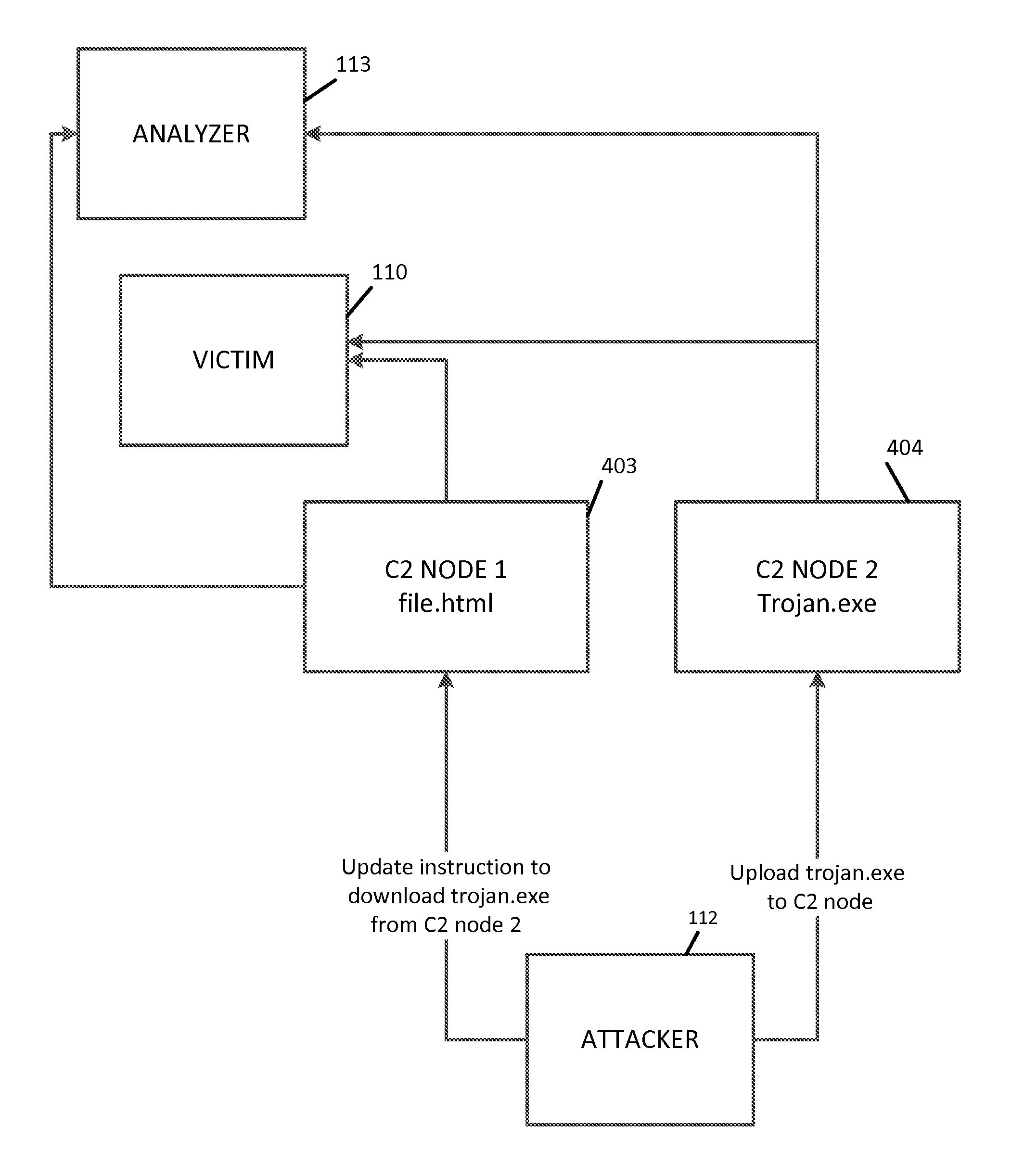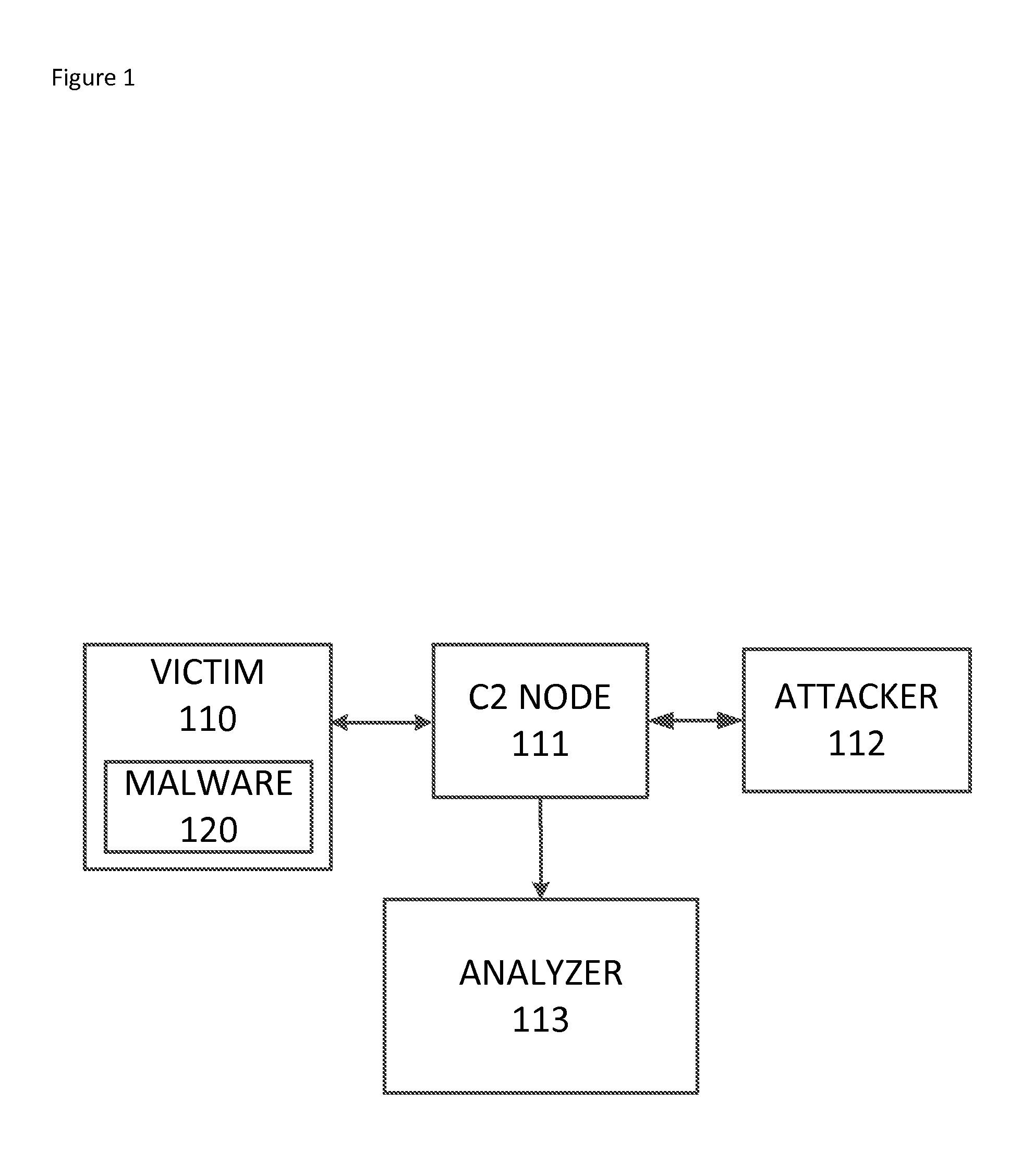Systems and methods for automated malware artifact retrieval and analysis
a malware and artifact technology, applied in the field of monitoring and collecting information, can solve problems such as unauthorized access to network resources, poor computing device function, and network operators facing the growing problem of problems
- Summary
- Abstract
- Description
- Claims
- Application Information
AI Technical Summary
Benefits of technology
Problems solved by technology
Method used
Image
Examples
second embodiment
[0099]In some embodiments, an alternative version can be implemented. In those embodiments, the processor can be configured to perform include some or all of the following steps, with reference to FIG. 6.
[0100]Step 601: Define a target resource having an identified URL. The identified URL can be predicted, as described herein, or known.
[0101]Step 602: Associate the target resource with a monitoring schedule.
[0102]Step 603: Store data descriptive of the target resource and monitoring schedule in a data store.
[0103]Step 604: Initiate a new fetch attempt of the target resource based on the monitoring schedule.
[0104]Step 605: Store data retrieved from the fetch attempt in the data store.
[0105]Step 606: Determine if another fetch attempt is scheduled. If another fetch attempt is scheduled, perform the next fetch attempt according to the schedule.
[0106]System Architectures
[0107]The systems and methods described herein can be implemented in software or hardware or any combination thereof.
[...
PUM
 Login to View More
Login to View More Abstract
Description
Claims
Application Information
 Login to View More
Login to View More - R&D
- Intellectual Property
- Life Sciences
- Materials
- Tech Scout
- Unparalleled Data Quality
- Higher Quality Content
- 60% Fewer Hallucinations
Browse by: Latest US Patents, China's latest patents, Technical Efficacy Thesaurus, Application Domain, Technology Topic, Popular Technical Reports.
© 2025 PatSnap. All rights reserved.Legal|Privacy policy|Modern Slavery Act Transparency Statement|Sitemap|About US| Contact US: help@patsnap.com



